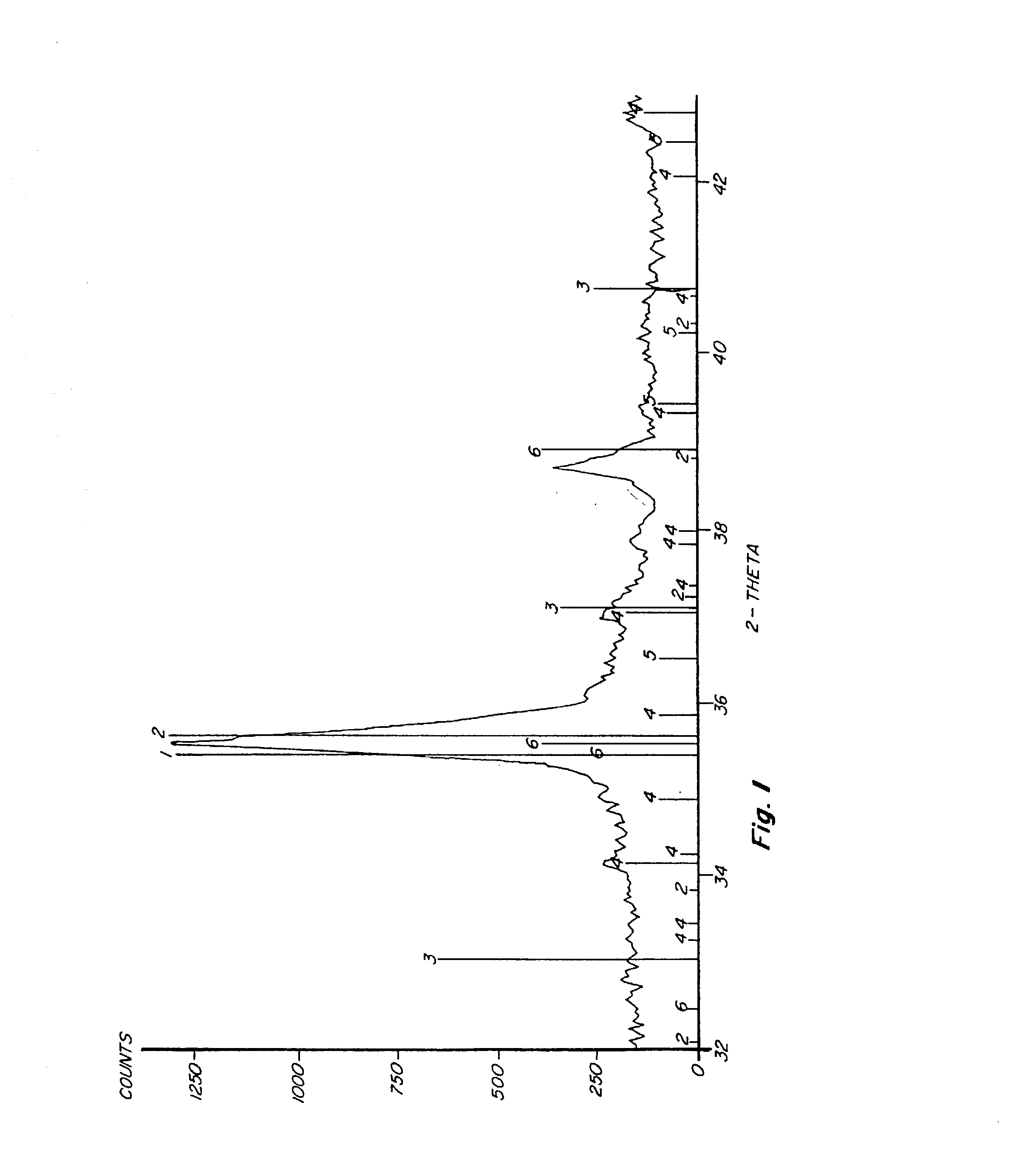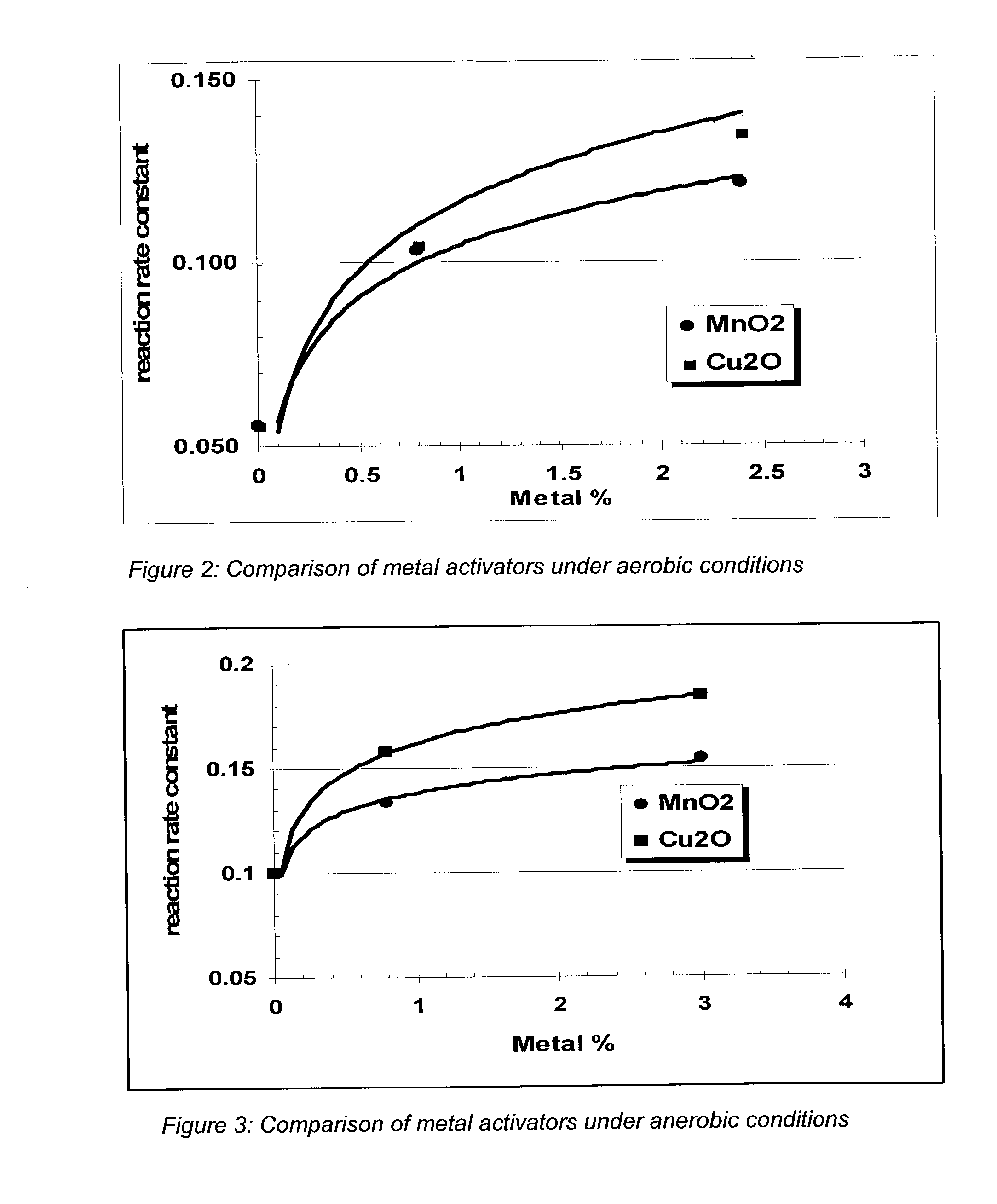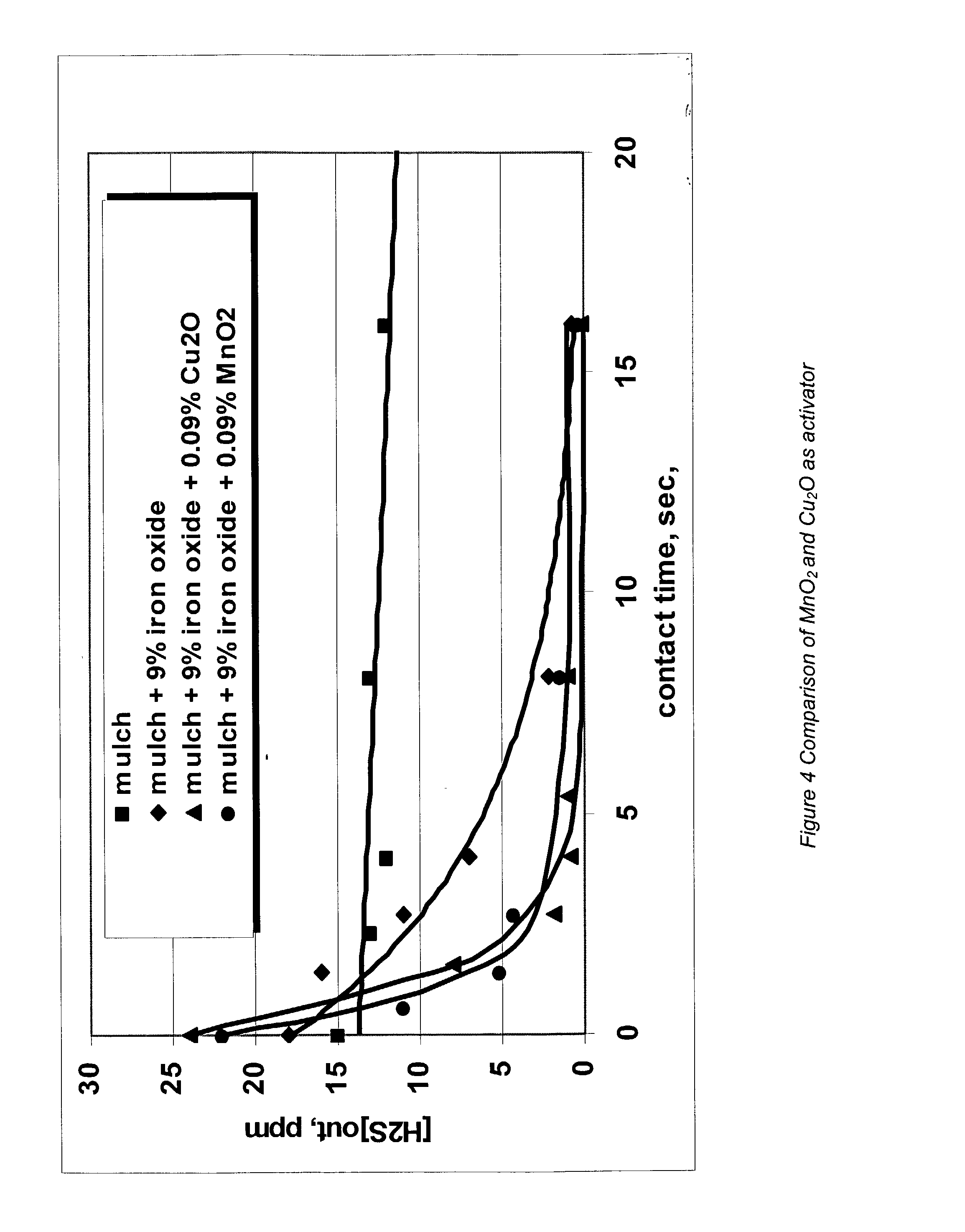Process and composition for increasing the reactivity of sulfur scavenging oxides
a sulfur scavenging oxide and reactivity technology, applied in the field of process and composition for increasing the reactivity of sulfur scavenging oxides, can solve problems such as galvanic corrosion, and achieve the effects of increasing the electro-potential, and increasing the reactivity of the oxide produ
- Summary
- Abstract
- Description
- Claims
- Application Information
AI Technical Summary
Benefits of technology
Problems solved by technology
Method used
Image
Examples
example 1
[0032] The following experiment was conducted to determine the amount of hydrogen sulfide removed from water by an iron oxide product containing manganese oxide as an activator under anaerobic conditions.
[0033] A 1.5 liter glass reaction vessel was set up with a sparge tube, pH probe, and stirrer. 900 ml of water was added to the vessel. A nitrogen sparge was used to remove any oxygen in th water. The system was then sparged with hydrogen sulfide (400 parts per million in nitrogen at a constant rate (approximately 100 ml / min.) measured with a rotometer. After 5 minutes, the hydrogen sulfide was measured in the gas phase, just above the liquid level. The results are shown in Table 1.
[0034] [t1]
1 TABLE 1 Hydrogen Sulfide out, ppm Solution pH (Time 5 minutes) 1 Water 5.4 400 2 + 2% Iron oxide 4.8 210 3 + 2% Iron oxide 4.9 200 4 + 2% Iron oxide + 0.02% 5.3 75 manganese oxide 5 + 0.02% manganese oxide 4.0 400
[0035] As can be seen from Table 1, the manganese oxide is an activator for the ...
example 2
[0036] The following experiment was conducted to compare the use of manganese oxide versus copper oxide as an activator for the iron oxide product under aerobic conditions.
[0037] Samples of 800 grams (g) of calcinated montmorillonite clay (+4-16 mesh), to which iron oxide was added to equal about 20% by weight of the total product, were made. Some examples included copper oxide as the metal activator, and others used manganese oxide. The concentration of the metal activators was varied in the different samples. The performance of these samples was assessed using a 2 inch internal diameter (i.d.).times.2 foot column, treating a gas mixture of 2500 ppm hydrogen sulfide and 5000 ppm oxygen, with the balance being nitrogen. Using these test results, a reaction rate constant (proportional to the reaction rate) was calculated. A comparison of the activators is shown in Table 2, and FIG. 2.
[0038] [t2]
2 TABLE 2 Reaction Rate Constant % Metal Oxide Activator With Copper Oxide(Cu.sub.2O) With...
example 3
[0040] Samples of g of calcinated montmorillonite clay (+4-16 mesh), to which iron oxide was added to equal about 20% by weight of the total product, were made, varying the metal activator copper oxide or manganese oxide, and the activator concentration.
[0041] The performance of these samples was assessed using a 2 inch i.d..times.2 foot column treating a gas mixture of 3000 ppm hydrogen sulfide, with the balance being nitrogen.
[0042] Using these test results, a reaction rate constant (proportional to the reaction rate) was calculated. A comparison of the activators is shown in Table 3 and FIG. 3.
[0043] [t3]
3TABLE 3 Reaction Rate Constant Reaction Rate Constant % Metal Oxide Activator With Copper Oxide(Cu.sub.2O) With Manganese Oxide(MnO.sub.2) 0 0.10 0.10 0.8 0.158 0.133 3.0 0.184 0.154
[0044] The results indicate manganese oxide is an activator for iron oxide for the removal of hydrogen sulfide in an anerobic system.
PUM
| Property | Measurement | Unit |
|---|---|---|
| Fraction | aaaaa | aaaaa |
| Fraction | aaaaa | aaaaa |
| Percent by mass | aaaaa | aaaaa |
Abstract
Description
Claims
Application Information
 Login to View More
Login to View More - R&D
- Intellectual Property
- Life Sciences
- Materials
- Tech Scout
- Unparalleled Data Quality
- Higher Quality Content
- 60% Fewer Hallucinations
Browse by: Latest US Patents, China's latest patents, Technical Efficacy Thesaurus, Application Domain, Technology Topic, Popular Technical Reports.
© 2025 PatSnap. All rights reserved.Legal|Privacy policy|Modern Slavery Act Transparency Statement|Sitemap|About US| Contact US: help@patsnap.com



